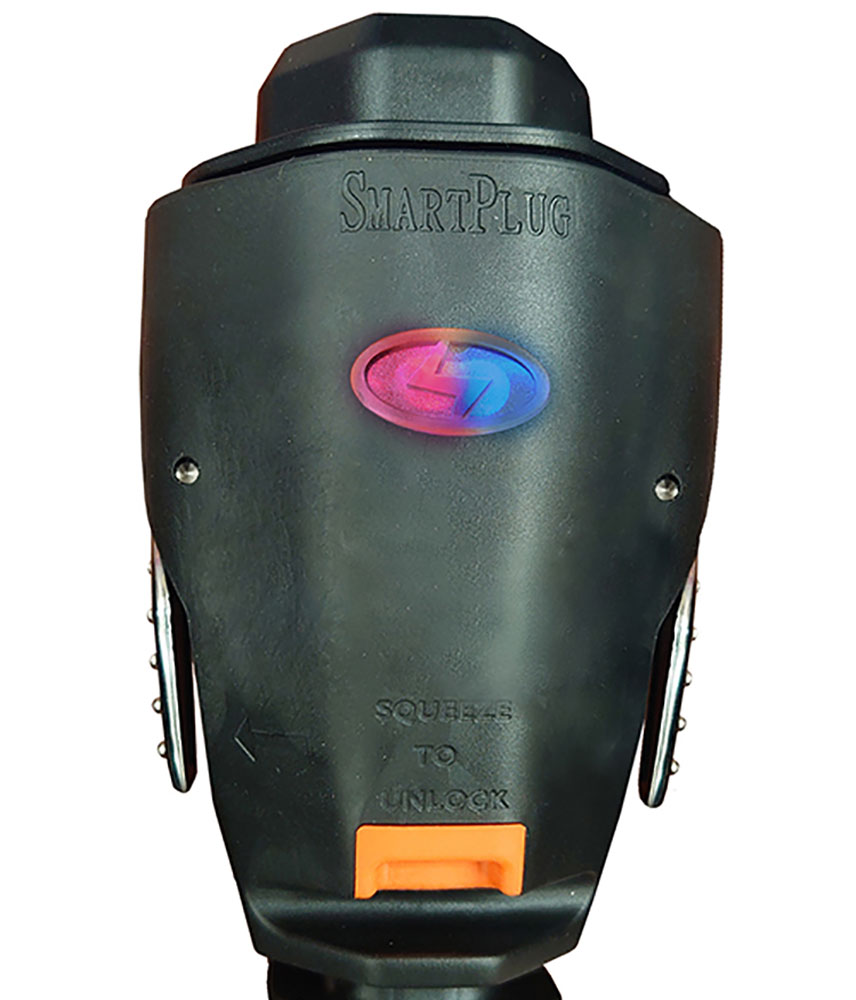ooking up to 120-volt AC power seems like a no-brainer, but there are a few precautions that should be taken before plugging in the power cord. First, you should determine the quality of the power — meaning, is the voltage at a proper level and is the wiring correct? Utilizing a surge protector is paramount, and most of the newer devices have multiple protection segments. The better ones, like the Hughes Watchdog (hughesautoformers.com) have a delay feature that surveys the connection and will provide an “all’s clear” signal (and connect) if the power is safe for the RV. The Hughes surge protector is very sophisticated and offers Bluetooth connectivity to a smart device.
You should never plug in an RV before establishing whether the power is “clean.” If you don’t have a surge protector, at least use a multimeter or commercial monitor to make sure there are no issues with the power. If using a multimeter, make sure the probes are in the right position for an accurate voltage measurement. To check voltage on a 50-amp receptacle, put one probe in the bottom vertical slot and the other probe in one of the other vertical slots. After you get that voltage value, move the outside probe to the other outside vertical slot and read voltage again. Voltage should be similar. For a 30-amp circuit, put the probes in the opposing slots and read the voltage.
Of course, the primary job of any surge protector is to prevent damage from brown- or blackouts, inconsistent power and lightning strikes. Surge protectors come in 30 or 50-amp capacities and can be built in to the system or used as a portable plug-in unit. The latter is susceptible to theft; although not commonplace in most RV parks it does happen. Locking mechanisms can be purchased to offer a higher level of security — and are typically proprietary to the brand of surge protector — or you can fashion your own with a good lock and cable.



Power cords are relatively durable if they are not abused. Typically, the cords that are supplied with the RV meet minimum standards and are less pliable than aftermarket counterparts. For example, Marinco (marinco.com), a venerable supplier to the marine industry, offers easy-to-handle 30- and 50-amp power cords that offer excellent service over long periods of time, typically the life of the RV. They are not cheap, but quality is obviously better than the stock versions and are much less rigid.
Connection reliability is only as good as the hardware in the sidewall or compartment of the RV. In too many cases, hard-to-seat terminals end up arcing over time, reducing the quality of the 120-volt AC power. There is where the SmartPlug (smartplug.com) really shines. The company offers plugs and receptacles (30- and 50-amp versions) that provide solid connections and virtually eliminate arcing — and they offer ergonomic handling and secure locking. I’ve been using the SmartPlug system since its inception in 2007 and can tell you there’s no going back.
Adapters that make it possible to plug 30- and 50-amp power cords into other than their respective outlets should also be part of any RV’s supply arsenal. Typically, an adapter is used to connect a 50-amp cord to a 30-amp supply, but there are times when a 30-amp cord must be plugged into 50-amp service when multiple options are not afforded at the hookup box. Keep in mind that, regardless of the adapter and/or cord, power input is always dependent of the available service at the box and the RV’s circuit breakers. Only use adapters with attached pigtails — the all-in-one versions get hot and can arc easily and can be rendered unsafe.




